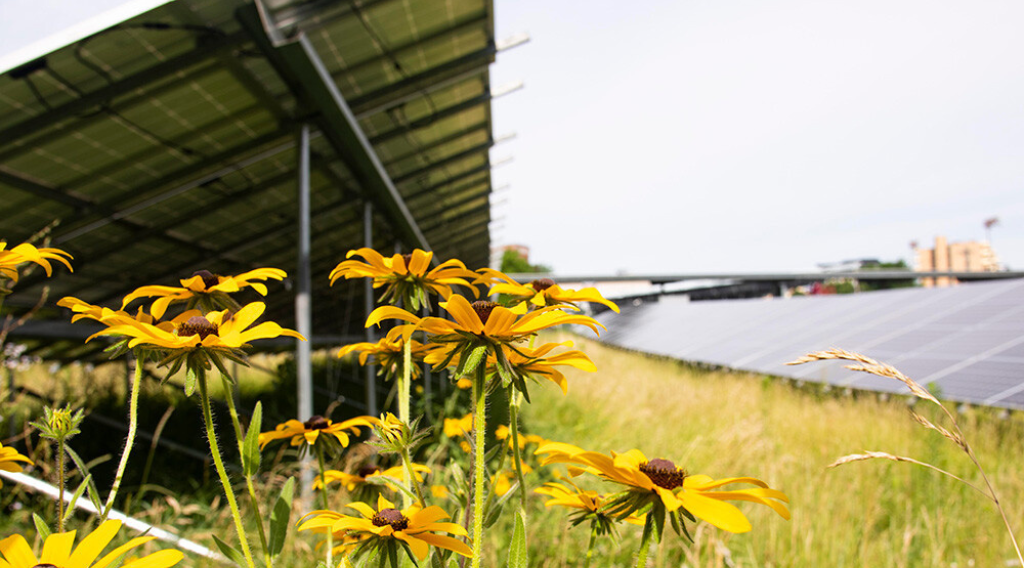
As Minnesota cities work to make progress on energy and climate goals, their efforts may run into a state-level barrier to higher building energy code standards. Seven cities in Minnesota are working together to engage other city leaders across the state to address this barrier by seeking higher energy building standards at the state level for commercial and large multifamily buildings. The Great Plains Institute is leading city engagement in support of this effort as part of a public-private partnership.
A few takeaways on why higher building energy code standards are important for Minnesota cities to reach their energy and climate goals:
- Building energy codes are a key policy and regulatory tool to impact greenhouse gas emissions.
- Many cities in Minnesota and across the nation are limited in their ability to enact better building energy standards due to limits set at the state level.
- Minnesota cities are seeking changes at the state level to support local ambition on energy and climate.
According to a statewide poll conducted by ALG Research, most Minnesotans favor more efficient building energy standards. Making buildings more energy efficient can improve occupant comfort, decrease energy bills, create local jobs, and is critical to reducing climate change impacts. In Minnesota, cities are limited in their ability to require construction above the state standard. Changes to the building energy code require changes to state policy.
Building energy codes are a critical tool to drive energy efficiency and tackle climate change
Modern building codes emerged after major fires in London (1666) and Chicago (1871) to protect people and property from harm. Building codes include a number of subsets (e.g., fire, electrical, plumbing, etc.) to address specific aspects of construction. The building energy code is a subset of standards that set minimum efficiency requirements for newly constructed and substantially renovated buildings. As these standards progress and improve over time, they represent a major opportunity to address greenhouse gas emissions from energy consumption and improve buildings’ resilience to climate hazards.
Authority for adopting and enforcing building codes varies state by state. In Minnesota, the building code sets a minimum construction standard throughout the state, which is enforced by the municipalities that adopt the code by local ordinance. The idea is to establish a level playing field for developers across the state. Cities in Minnesota may not enforce standards that go beyond the state code, including the energy code. This creates a barrier for those cities that have adopted climate goals and seek to reduce greenhouse gas emissions from commercial buildings through higher efficiency and renewable energy standards.
The Minnesota Department of Commerce and Department of Labor and Industry recently released a report, Improving Energy Efficiency in Commercial and Multifamily Construction, detailing recommendations for improvements to the state building energy code. The recommendations resulted from an informal, short-term workgroup convened by the departments. The focus was to examine the potential for local governments to implement greater energy efficiency measures for commercial and large multifamily buildings above the state building energy code.
The report states that “[i]n 2017, Minnesota’s building sector consumed 40.6% of the total energy consumed in the state, 19.5% of which was from within the commercial buildings sector, including large multifamily buildings.” Energy use can be substantially reduced through better energy efficiency measures and the Minnesota building energy code has been among the most effective tools when it comes to the efficiency of buildings.
The report notes that the first commercial energy code was adopted in 1976 and has since been updated 12 times. Buildings built in Minnesota today are 52 percent more efficient than those constructed under the 1976 energy code due to advances in technology and code improvements, underscoring the important role these standards play in improving building performance.
The Minnesota workgroup concluded that the current commercial energy code would likely not allow for city and state greenhouse gas goals to be met within their stated timeframes. Likewise, without changes to the building energy code, cities are hamstrung in efforts to meet their goals. The workgroup explored different options that would enable local entities to meet their goals. Ultimately, the departments determined that an accelerated and advanced statewide commercial energy code was the preferred pathway to achieve net zero [energy] by 2036. This would also increase the frequency that Minnesota adopts the commercial energy code from six to three years and have a significant impact on the emissions from the commercial sector in many Minnesota cities.
Minnesota nonprofits, cities drive effort to seek higher standards for building energy codes
More than two dozen Minnesota cities have energy goals and at least eight cities have adopted climate action plans, with more plans on the way. Cities have varying control over the greenhouse gases that are emitted from local energy consumption. In many cases, cities have the authority to regulate land use, manage transportation, and influence the attributes of buildings. They can also accelerate new technology deployment with enabling ordinances and smart permitting that can streamline beneficial actions, like solar installations and electric vehicle adoption. But cities face barriers when it comes to their ability to enforce better building energy standards.
Minnesota cities are feeling the impacts of a changing climate. Heavy precipitation, freeze/thaw cycles, poorer air quality, and hotter summers are taking a toll on infrastructure and health, and are increasing costs for residents and businesses. Existing policy levers and the current trajectory of the state building energy code are not enough for either the state or local entities to meet established climate goals. Cities need all appropriate tools at their disposal to meet local climate goals and help drive down state emissions.
You can learn more about achieving higher building energy codes in Minnesota by visiting the Better Buildings for Minnesota Website.
If you’re interested in supporting the effort, contact one of the following:
Abby Finis, Great Plains Institute, [email protected]
Ben Rabe, Fresh Energy, [email protected]
Stacy Miller, City of Minneapolis, [email protected]


